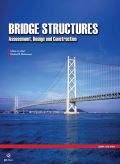Authors: Malla, Pranit | Khedmatgozar Dolati, Seyed Saman | Mehrabi, Armin | Ortiz Polanco, Jesus | Nanni, Antonio | Dinh, Kien
Article Type:
Research Article
Abstract:
The application of Fiber Reinforced Polymer (FRP) materials in concrete structures has been rising due to their several advantages, including lightweight, high tensile strength, ease of installation, and corrosion resistance. They have been mostly implemented for strengthening and repairing existing structures in the form of an externally bonded system, i.e., sheet, jacket, near surface mounted. Furthermore, they have been recently utilized as internal reinforcement of concrete elements in the form of strands, bars, tendons, etc. Although higher durability and performance are associated with the FRP material in some aspects compared to steel, concerns remain regarding damages and defects in this
…material, many of which are related to their unique features. Importantly, debonding of FRP materials from a concrete surface or within a concrete element has always been an issue resulting in the premature failure of the structure. To this end, concrete elements strengthened or reinforced with FRP materials has to be inspected periodically to detect potential issues and hence prevent any premature failures. This study first determines all possible or potential damages and anomalies attributed to FRP reinforced/strengthened concrete (FRP-RSC) elements. It then investigates Non-Destructive Testing (NDT) methods that can be applicable to the inspection of FRP-RSC elements from a literature survey of past studies, applications, and research projects. Furthermore, this study evaluates the ability of two of the most commonly used NDT methods, Ground Penetrating Radar (GPR) and Phased Array Ultrasonic (PAU), in detecting FRP bars/strands embedded in concrete elements. GPR and PAU tests were performed on two slab specimens reinforced with GFRP (Glass-FRP) bars, the most commonly used FRP bar, with variations in their depth, size and configuration, and a slab specimen with different types of available FRP reinforcements. The results of this study propose the most applicable methods for detecting FRP and their damage/defects in FRP-RSC elements. This study further investigates the feasibility of two new methods for improving the detectability of embedded FRP bars. By providing the inspection community with more clarity in the application of NDT to FRP, this study offers means for verifying the performance and, therefore, help the proliferation of FRP materials in concrete structures.
Show more
Keywords: Non-Destructive Testing (NDT), damage detection, Fiber-Reinforced Polymers (FRP), composites, concrete elements, FRP-reinforced, FRP-strengthened, bridges, GPR, PAU, improving detection
DOI: 10.3233/BRS-230217
Citation: Bridge Structures,
vol. 19, no. 4, pp. 149-164, 2023
Price: EUR 27.50





